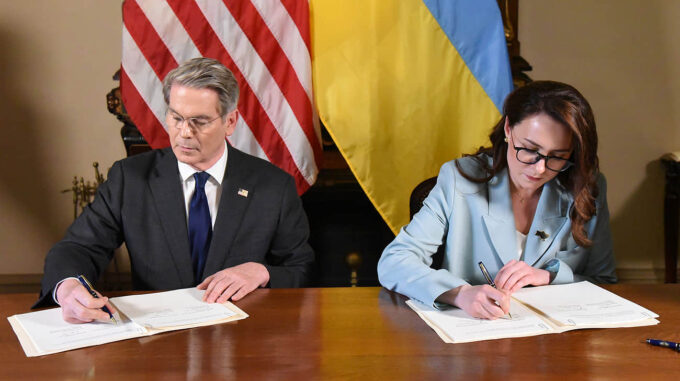Focusing on the details of the new agreement between Ukraine and the United States, it is worth highlighting several key aspects that have strategic significance for both parties in the context of Ukraine’s energy security and resource independence

This agreement marks a new stage of cooperation, combining diplomatic, economic, and military dimensions, while maintaining a certain balance of interests and partnership commitments. At first glance, the document is a 12-page agreement formally signed in Washington on April 30 of this year. For comparison, the previous draft, which was submitted to Ukraine in March, was over 90 pages long. Clearly, the parties managed to concisely outline the main provisions, leaving detailed regulation of political nuances and technical arrangements for future agreements. This indicates a desire on both sides to retain flexibility and avoid unnecessary risks during the formalization of cooperation. It is important to emphasize that the agreement explicitly considers Ukraine’s commitments to adhere to international standards and obligations to the EU, including accession to the European community. If any conflicts arise in these areas, the provisions of the US agreement will be reviewed. This underscores the importance of Ukraine’s political and economic independence and its aspiration to pursue the strategy of European integration without conflicts between the two foreign policy courses. Another significant aspect is that the agreement does not entirely subordinate Ukrainian resources to the American legal system. Resolution of any disputes will be based on a parity approach and consultations between the parties, ensuring a balance of interests regarding resource issues. The fundamental principle is the absence of a "first right" for American companies to obtain licenses for extraction. At the same time, in accordance with the agreement, American firms will have equal access to auctions or negotiations in the Ukrainian market, gaining the same opportunities as local and other foreign participants. Regarding the specific list of mineral resources covered by the agreement — it includes a total of 57 items. These encompass strategic metallic resources such as copper, nickel, gold, platinum, as well as rare elements, including beryllium, cesium, gallium, germanium, iridium, lanthanum, lithium, neodymium, indium, yttrium, pyrite, radium, rutenium, among others. The list also contains traditional mineral resources — aluminum, antimony, barite, graphite, scandium, tantalum, tellurium, Tantalum, tin, titanium, uranium, vanadium, zinc, zirconium, as well as natural gas and oil. It is important to highlight that this agreement concerns only new deposits, meaning licenses issued after its entry into force. The list of minerals can be expanded by mutual consent, allowing flexible responses to geological discoveries and market needs. However, the agreement does not cover extraction and revenues from other minerals or infrastructure outside its scope. Regarding the investment aspect, nearly half of the revenues obtained from license sales and rent payments will be directed to a joint fund. Ukraine will be able to transfer funds there for national development and recovery processes. At the same time, foreign companies, including American firms, will have equal opportunities to obtain licenses, with access to auctions and negotiations on equal terms alongside Ukrainian and other international participants. On military assistance, the document records that the US commits to providing Ukraine with new weapons, ammunition, technologies, and ensuring training for the Ukrainian military. US investments in military aid will be considered as part of their contribution to the fund, confirming the strategic nature of the security cooperation. However, the text of the agreement lacks some important provisions, particularly regarding the management of the fund and the US commitments not to withdraw funds for ten years, as well as reinvesting 100% of revenues into Ukraine’s restoration. Such provisions are expected to be detailed in future agreements — notably the upcoming follow-up agreement currently under development. The ratification of this agreement is expected in the near future from both Ukraine and the US. First Deputy Prime Minister Yulia Sviridenko noted that after signing, the document will immediately begin functioning within the investment fund framework, laying the foundation for a long-term and strategically advantageous partnership. Overall, this agreement represents an important step in defining Ukraine’s resource policy, its integration into the global energy and metallurgy systems, as well as issues related to security and defense. Cooperation with the US in the field of subsoil resources has the potential not only to promote economic growth and attract investments but also to strengthen the country’s defense capabilities amid current challenges. "European Pravda" assures that a more detailed analysis of the agreement will appear in the coming days, enabling the public and expert community to thoroughly assess all its implications and opportunities.

